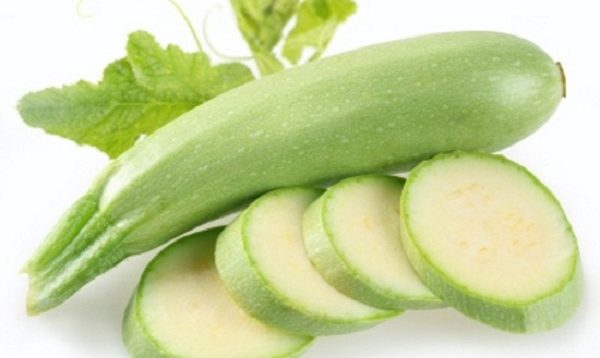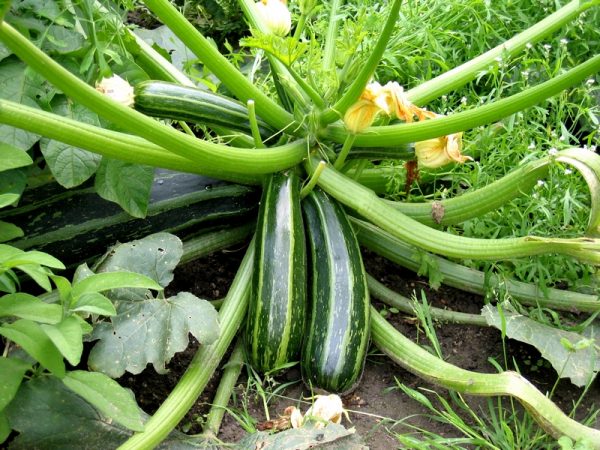What is the difference between zucchini and zucchini?
Content
What is the difference
Let's start with general points: both zucchini and zucchini come from the pumpkin family, that is, they are related. The differences start with the shape and color of the vegetables. Zucchini are bushy plants that spread along the ground, actively branching. Their fruits can grow to really gigantic sizes, oblong, white, less often yellow, contain seeds inside. They should not be eaten raw. The skin covering the fruit is tough and rarely eaten, since the fruit has to be boiled into porridge to soften.
Zucchini - grows in a neat bush, without obvious branches. Fruits are much smaller than those of zucchini, dark green in color with a speckled pattern. Compared to squash, they have softer, crisp flesh and smaller flowers and leaves. The fruits can be eaten raw, they do not contain seeds inside.
The delicate skin of the fruit does not need to be removed during cooking, which adds value to the product. They are less caloric, but at the same time contain a rich vitamin complex, which is found in large quantities in the skin of the vegetable. Unlike zucchini, they ripen much faster and give a greater yield.
In fact, these are similar plants that differ from each other in the same way as two varieties of any culture - in the features of the structure of the fruits, taste and nuances of agricultural technology. They are two different vegetables that belong to the same family.
Video "All about the cultivation of zucchini, zucchini and squash"
An informative video that will help every gardener grow healthy and prolific zucchini and zucchini.
Features of agricultural technology
In matters of growing zucchini and zucchini, they differ in preferences in living conditions. Otherwise, like any pumpkin plant, they like moderate fertilizing with mineral or organic fertilizers, do not tolerate an excess of nitrogen compounds in the soil. Zucchini is less whimsical - it loves neutral soil, sun, moderate watering. Moreover, they do not need to be weeded regularly due to the fact that they creep along the ground - the weeds simply cannot grow in its shade. The harvest ripens only by the end of August - the beginning of September. They can grow both outdoors and in greenhouses or greenhouses. They are prone to root rot, so it is imperative to thin out the leaves in the root zone, as well as monitor the temperature of the soil and water.
Zucchini are also thermophilic in this regard, but they prefer moist soils, abundant watering, and high air humidity. If zucchini can live in one place for several years (although this is not recommended because of the danger of fungal diseases), then their relatives do not get along well in one place. The first crop can be harvested in June. Basically, they are grown in greenhouses, hotbeds or under film. They are more susceptible to the invasion of powdery mildew, root rot, downy mildew.
Both varieties of pumpkin seeds require careful selection of fertilizers. A complex of NPK minerals, which is applied by the foliar method, is suitable.Plants treat potassium, wood ash, mullein infusion, urea, saltpeter well. Requires three to four additional fertilizing per year to produce the best yield.
The first feeding is best done when transplanting seedlings into the ground, with a solution of ammonium nitrate and superphosphate. Every two weeks, you can add a mixture of 30 g of superphosphate and 1 g of boric acid, which are dissolved in 10 liters of water. The iodine solution, which is used to disinfect the soil and stimulate vegetative processes, as well as the yeast solution, which nourishes the plants with the necessary mineral microelements, has a good effect on growth.
For seedlings, zucchini are grown in cups, just like zucchini. However, unlike zucchini, the period of readiness of seedlings for transplanting in the former is shorter - only 25-30 days, while the growth of zucchini needs to wait 45-50 days. This is where the actual differences in agronomic procedures between species end. Both types need fertilizing with mineral and organic fertilizers, watering, airing, prevention of fungal diseases.
In fact, in order to get a juicy vegetable as soon as possible, you should grow zucchini, and in order to amuse yourself with a delicious vegetable towards the end of summer - zucchini. The only difference is in the name, species and taste. The rest of the zucchini and zucchini are pumpkin, which will decorate any table and any dish.
Video "How zucchini and zucchini grow"
A video selection of photos that will show how similar the two varieties of fruits called zucchini and zucchini are.



